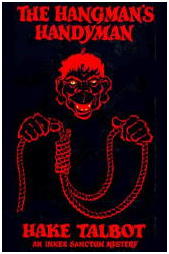Tue 11 Nov 2008
A Movie Review by Walter Albert: THE BAND WAGON (1953).
Posted by Steve under Films: Comedy/Musicals , Reviews1 Comment

THE BAND WAGON. MGM, 1953; Vincente Minnelli, director. Screenplay by Betty Comden & Adolph Green; Sol Polito, cinematographer. Fred Astaire, Cyd Charisse, Nanette Fabray, Oscar Levant, Jack Buchanan, James Mitchell, Thurston Hall, Robert Gist. Shown at Cinecon 41, September 2005.
This dazzling musical was programmed to introduce Nanette Fabray’s guest appearance. In his introductory remarks, Broadway and film musical historian Miles Kreuger tried to make a case for the film as the best of the MGM musicals for being “truest” to the theatrical experiences of Comden & Green, but even Fabray objected to this downgrading of Singing in the Rain.

(I think that Swing Time and Meet Me in St. Louis are both at least as good as the Astaire/O’Connor miraculous pairing, but I won’t press this point.)
Where The Band Wagon suffers is in the obligatory ballet, ‘The Girl Hunt,’ clever in its apparent references to Mickey Spillane (thanks, Jim) but with none of the ebullient vitality of the big ‘Broadway Melody’ number in Singing in the Rain.

Still, it’s one of MGM’s best musicals. The ‘Dancing in the Dark’ duet of Astaire and Charisse is arguably the dance highlight of the film, with Astaire’s opening number in the game arcade not far behind. Then there’s Thurston Hall, who as the show’s major backer still breaks me up in his brief scene outside the theater after the disastrous first night of the Oedipal musical.
Fabray shared memories of her work on the ‘Triplets’ number, and she proved to be still as attractive and spirited as she was over a half-century ago.
Certainly not the discovery of a lost masterpiece, but a reminder that the genre is better defined by its high spots rather than the lesser films we often see revived.

[EDITORIAL COMMENT.] The links I’ve added to Walter’s review lead to clips from the film I discovered on YouTube. — Steve



















 ELIZABETH PETERS – The Camelot Caper.
ELIZABETH PETERS – The Camelot Caper.




